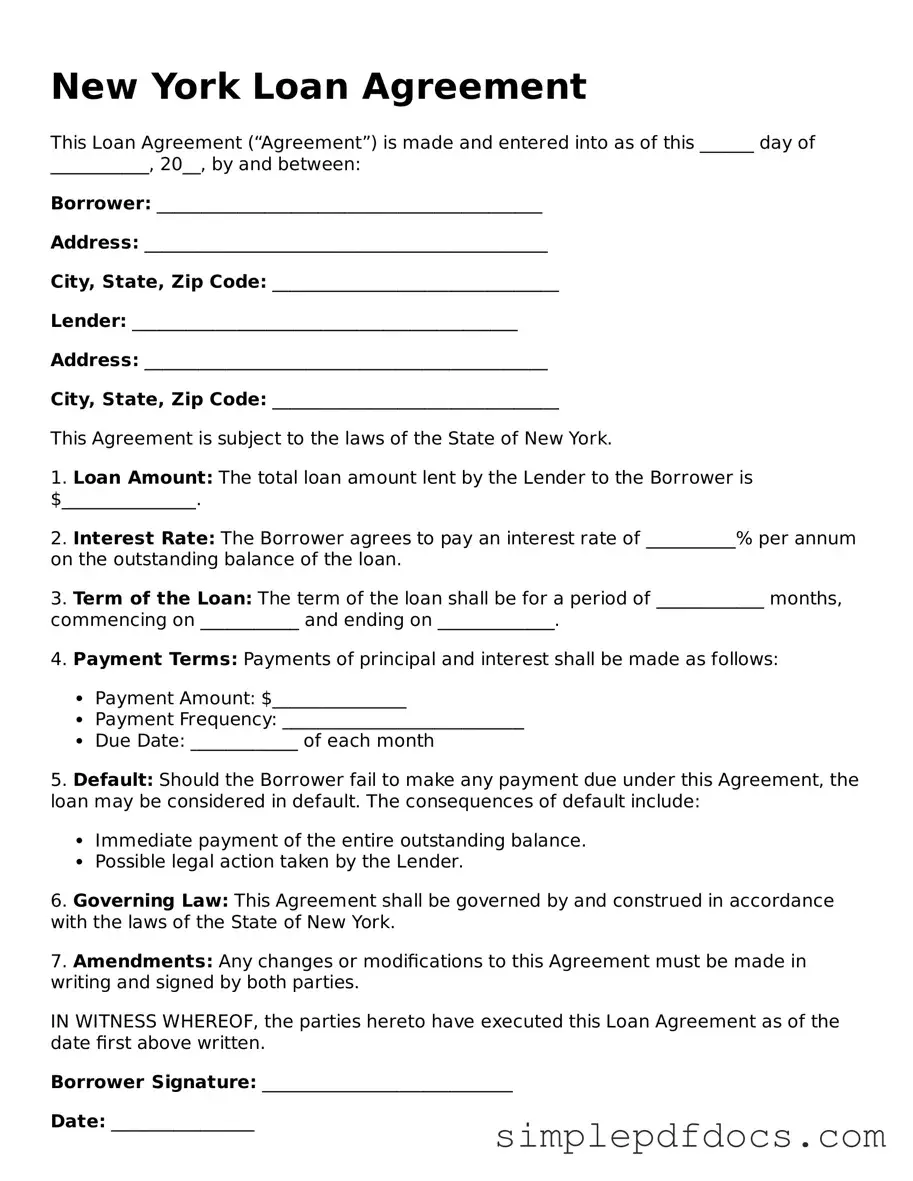When it comes to borrowing or lending money in New York, a well-structured Loan Agreement form is an essential tool that protects both parties involved. This document outlines the terms of the loan, ensuring clarity and mutual understanding. Key elements typically included in the form are the principal amount being borrowed, the interest rate, and the repayment schedule. Additionally, the agreement may specify the consequences of default, providing a safety net for the lender. Notably, the form should also include details about any collateral involved, which can provide additional security for the lender. By clearly defining the roles and responsibilities of both the borrower and the lender, the Loan Agreement helps to prevent misunderstandings and disputes down the line. Understanding these components is crucial for anyone looking to navigate the financial landscape in New York, whether they are securing a personal loan or facilitating a business transaction.
